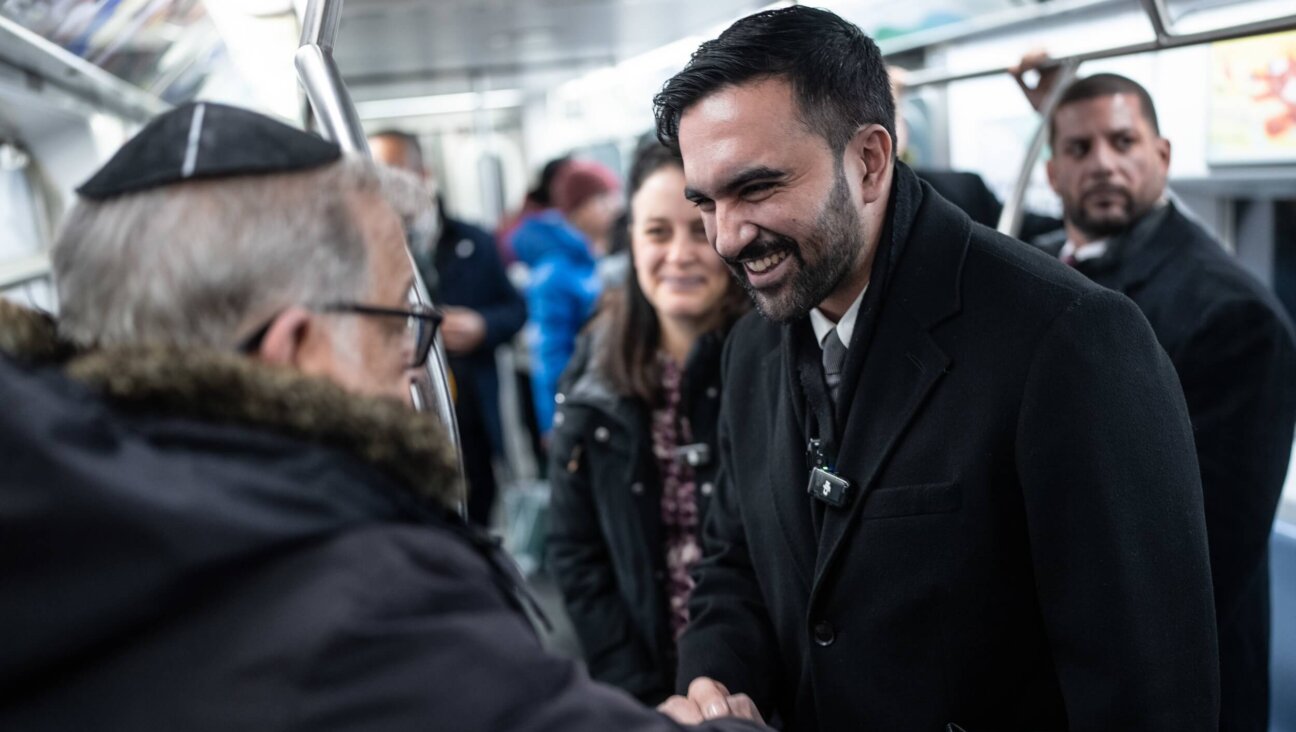In Europe, A Festival Insists That Jewish Culture Is As Important As Ever

The Sinagoga Eua Tova (Yeshua Tova Synagogue) in Bucharest. Image by Getty/Laszlo Szirtesi/Contributor
On September 1, 2019, the 80th anniversary of the start of World War II, 34 countries will observe the European Days of Jewish Culture, opening the doors of historic synagogues and engaging local communities in over 400 cities throughout the continent.
That anniversary is notable, but rather than focusing on the Holocaust and its near-obliteration of Europe’s Jewry, the European Days strives to shine a light on the vibrancy of Jewish tradition before and after the Shoah. This year marks the 20th anniversary of the program, which began as an “Open Doors” program in Alsace, France.
The program was established as a continent-wide initiative in January, 1999, at a conference on Jewish heritage in Europe held at the Jewish Art and History Museum in Paris. Ruth Ellen Gruber, director of Jewish Heritage Europe, a web portal for Jewish culture, remembers that conference as the second significant meeting of its kind, following a 1990 meeting in New York. Until the late ‘80s, she said, with the decline of the Soviet Union and the opening of Eastern Europe, a connected scholarly community interested in European Jewish history was virtually unheard of.
But in the years since the New York conference, the community in Alsace, which borders Germany and Switzerland, had begun restoring synagogues and cemeteries and had opened a Jewish museum. In 1996, these efforts culminated in an “Open Doors” initiative, in which the public were invited into Jewish-built structures and historic areas and given guided tours. The leaders of the program, Claude Bloch and Catherine Lehman, spoke of their undertaking at the 1999 conference. “Their attitude was positive,” said Gruber. “It was saying, ‘Look, there’s this phenomenal heritage we have here. Let’s not just weep about it: Let’s bring it out into the public.’”
Gruber was one of two dozen attendees who stayed after Bloch and Lehman’s speech and, energized by their pitch, planned the launch of a pan-European Day of Jewish Culture after the Alsatian model. Four countries, Switzerland, France, Italy, Spain and Germany, held the first such day on the first Sunday of September that same year. The next year, the project expanded to include 16 countries. The project has since been relabelled the Days of Jewish Culture, with some cities having programming that stretches on for a week and others, like Italy, choosing to start the festivities a little later.
Cross-continentally, the event is overseen by the European Association for the Preservation and Promotion of Jewish Culture and Heritage (AEPJ), based in Barcelona.
“You realize how different the reality [is] in each country, but also each city,” Victor Sorenssen, the director of AEPJ, told the Forward.
“It’s a way to demystify Jews. In many of these countries Jewish communities either are almost non-existent or so small that people never meet a living Jew,” Gruber said. “People learn about the Holocaust, and maybe they learn about ancient Jews in Judea, in biblical times, but there’s not much knowledge and not much understanding of what was there before the Holocaust and the Jewish life that existed. That’s why this is an important initiative — it’s aim is not to tell how Jews were killed but to tell how Jews lived and live today. It’s Jews as living cultures and living people.”
This year, events for Days of Jewish Culture surround the theme of the 20th anniversary of the Days themselves, and include a demonstration of a Jewish heritage iPhone app in Novi Sad, Serbia; tours of the Jewish cemetery in Bologna and music from Handel’s “Israel in Egypt” at the city’s Jewish museum; klezmer dance lessons at the Jewish Congregation of Stockholm; and a concert of Sephardic music in Castelló d’Empúries, Spain. The programs, in their variety, strive to welcome local communities in Jewish-bulit spaces and to underline European Jewry’s continued presence in European culture. In the past three years, the National Library of Israel has been a partner of the program, providing both artifacts originally from Europe and exhibition texts translated into different languages.
“What we want to achieve is to present Jewish heritage as an integral part of European heritage — not just to say ‘We open a synagogue one day and the rest of the year they’re closed.’” Sorenssen said. “The whole idea is to connect and create dialogue between and within society.”
The mission of the Days has shifted somewhat in recent years, with the rise of populism and nationalism on the continent bringing an opportunity for reflection, Sorenssen added. “It is important now to look to the other.”
Noting the many changes since the first day of Jewish heritage 20 years ago, including the restoration of cemeteries and synagogues and the opening of Jewish museums, Gruber recalled the 1999 remarks of then-French Culture Minister Catherine Trautmann, whose Ministry had gathered the academics for that fateful January meeting. “Jewish heritage in France is also the heritage of all the French people,” Gruber remembered her saying.
PJ Grisar is the Forward’s culture fellow. He can be reached at [email protected]

















